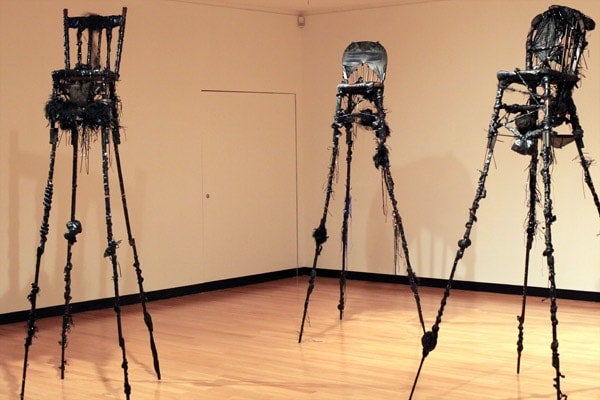
South Slavic Studies
Published: February 6, 2012
In observance of Black History Month, guest curators Sally Frater and Pamela Edmonds have produced, 28 Days: Reimagining Black History Month, an art exhibition at Hart House’s Justina M. Barnicke Gallery that asks us to consider what it is to have a month dedicated to black history and what this means to a new generation of artists.
“Some artists refuse to show their work in Black History Month shows as a political statement against the marginalization of their practices,” the curators said, “whereas others feel it is one of few opportunities they have to participate in the broader cultural landscape, particularly with work that addresses issues of black identity and visual culture.”
The two curators began discussing the project in 2008. The result is a largely conceptual art exhibition – a collaboration between the Barnicke gallery and Georgia Scherman Projects gallery -- that connects artists from Canada and around the world to show overlapping histories and to address issues of memory and race.
They chose the title 28 Days, not only because it refers to the month in which black history is celebrated; it is also a nod to the curators’ attempt to reimagine the event in another way. The show’s subtitle, Reimagining Black History Month, acknowledges the significance of memory as it opens the door to a newer generation of artists with their own ideas and questions.
Edmonds noted that during the 60s and 70s, African American artists used artistic production as a way to reclaim their history and revise an African American identity defined by racist stereotypes.
“But we’ve moved into another generation with its own issues of multiculturalism, globalism and a new relationship that the artists are addressing, the commodification of blackness,” she said.
Artists whose work is on display at the Barnicke gallery include Camille Turner, Denniston Ewan, Wangechi Mutu, Leo Asemota and Carrie Mae Weems, each addressing notions of race, history and contemporary art practices using a variety of mediums. However, it is Asemota’s work Map of the City, 2001 that really captures the themes of the show with a chilling representation of the tension between the notion of celebration and the realities of everyday life.
“It really resonated with the theme of this exhibition,” said Frater. “Asemota’s work raises questions about representation and the purpose of Black History Month.”
In 2001, Asemoto – a Nigerian living in London, England – began riding around the city on buses, getting off to photograph witness appeal signs set-up by London police. He was interested in the descriptions of the perpetrators and how the language of racial profiling comes into play.
The photographs were later used to create a booklet for the Camden Black History Month program. When viewers opened the booklet, they saw event listings on the left side of the page and a photograph of a witness appeal sign on the right.
“When the books came out there was a lot of controversy,” said Edmonds. “The reaction at creating this relationship between crime signs and Black History Month also shows the expectation of what people think should be shown during Black History Month.”
Twenty-eight Days is also about connecting Canadian black history and artists to the transnational discourse.
In 1993, cultural theorist Paul Gilroy published a book, The Black Atlantic: Modernity and Double Consciousness. In it he proposed another way of looking at history that connects the African diaspora through the slave trade migration. However, he failed to include Canada in his reimagined history.
“Canada was left out and there have been major contributions, not just in visual arts, but to these ideas of diaspora and transatlantic culture,” said Frater.
The exhibition at the Justina M. Barnicke Gallery is on until Feb 19. A panel discussion with the curators is planned for Feb. 18. For more details visit the gallery website.



